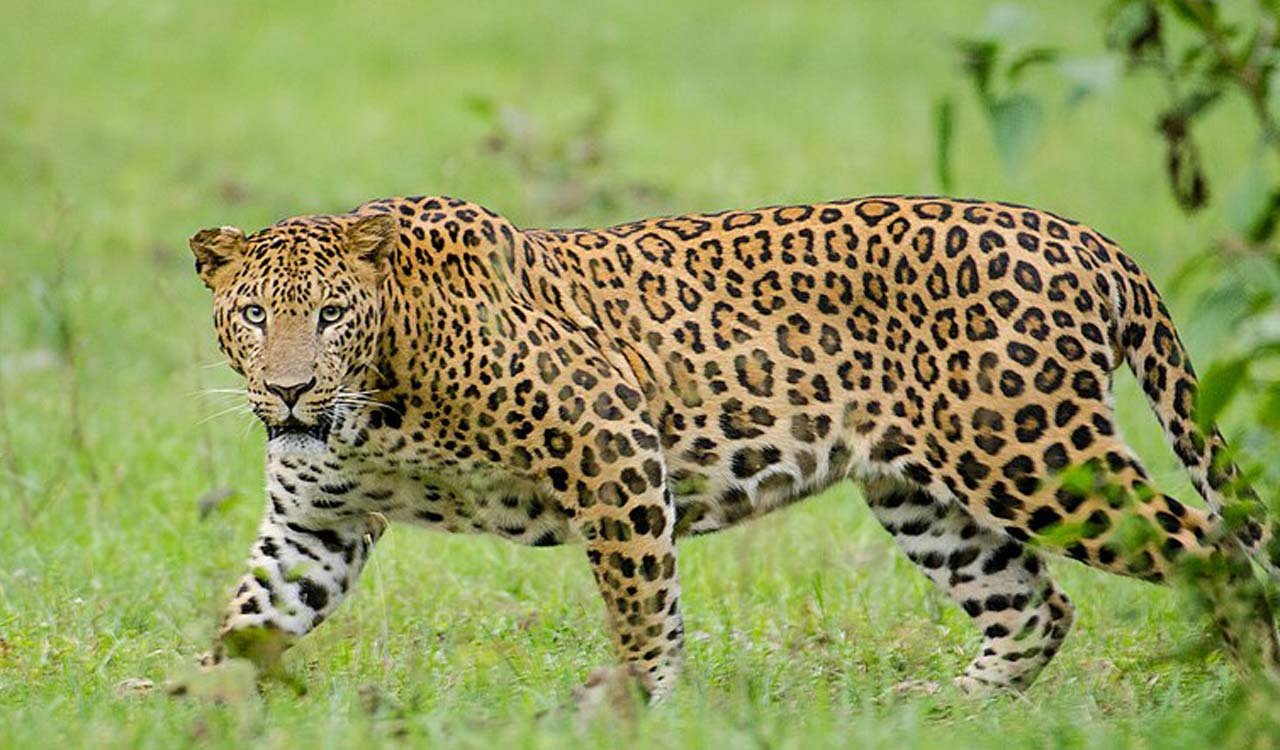Madhya Pradesh houses the largest population of leopards in the country: 3907 (2018: 3421), followed by Maharashtra (1985), Karnataka (1,879) and Tamil Nadu (1,070).
Published Date – 29 February 2024, 02:21 PM

New Delhi: India’s leopard population has reached 13,874, with 1.08 percent per year growth between 2018 and 2022, as per a report released by the Environment Ministry on Thursday.
According to the report released by the Union Environment Minister Bhupender Yadav, Madhya Pradesh houses the largest population of leopards in the country: 3907 (2018: 3421), followed by Maharashtra (1985), Karnataka (1,879) and Tamil Nadu (1,070). The fifth cycle of leopard population estimation (2022) in India focused on forested habitats within 18 tiger states, covering four major tiger conservation landscapes. Non-forested habitats, arid areas, and high Himalayas above 2000 msl (~ 30% area) were not sampled for leopards.
“India’s leopard population is estimated at 13,874 (range: 12,616 – 15,132) individuals, representing a stable population in comparison to the similar area being sampled in 2018 with 12852 (12,172-13,535) individuals,” the report mentioned. This estimate represents a population of 70 percent of leopard habitat, the Himalayas and semi-arid parts of the country, which are not tiger habitats, were not sampled.
Tiger Reserves or sites with the highest leopard population are, Nagarajunasagar Srisailam (Andhra Pradesh), followed by Panna (Madhya Pradesh), and Satpura (Madhya Pradesh). “Central India shows a stable or slightly growing population of leopards (2018: 8071, 2022: 8820), Shivalik Hills and Gangetic Plains experienced a decline (2018: 1253, 2022: 1109).
If we look at the area that was sampled both in 2018 and 2022 across India, there is a 1.08 percent per annum growth,” the report mentioned. The largest growth rate was in Central India and the Eastern Ghats at 1.5 percent, as per the report. However, there is a 3.4 percent decline per year in the population growth of leopards in the Shivalik Hills and the Gangetic Plains. Leopards are powerful big cats closely related to lions, tigers, and jaguars.
They are facing escalating threats across their range in India. Amidst habitat loss, human-wildlife conflict, and poaching, the National Tiger Conservation Authority (NTCA) spearheaded the fifth cycle of leopard population estimation, shedding light on the status and trends of these elusive big cats. This cycle conducted a foot survey spanning 6,41,449 km to estimate carnivore signs and prey abundance.
Camera traps were strategically placed at 32,803 locations, resulting in a total of 4,70,81,881 photographs, resulting in 85,488 photo-captures of leopards. Reflecting on the report, the union environment minister said that Project Tiger’s conservation legacy extends beyond tigers, as evident in the leopard status report, showcasing broader species protection efforts. “The report emphasises conservation commitment beyond protected areas, lauding the Forest Department’s dedicated efforts.
Project Tiger’s inclusive approach underscores ecosystem interconnectedness and diverse species conservation. Under our Prime Minister, Narendra Modi’s guidance, this conservation journey embodies the ethos of one Earth, one family, and one future. Congratulations to all contributors to this crucial mission,” Yadav added. The environment ministry noted that the findings in the report underscore the critical role of protected areas in conserving leopard populations.




